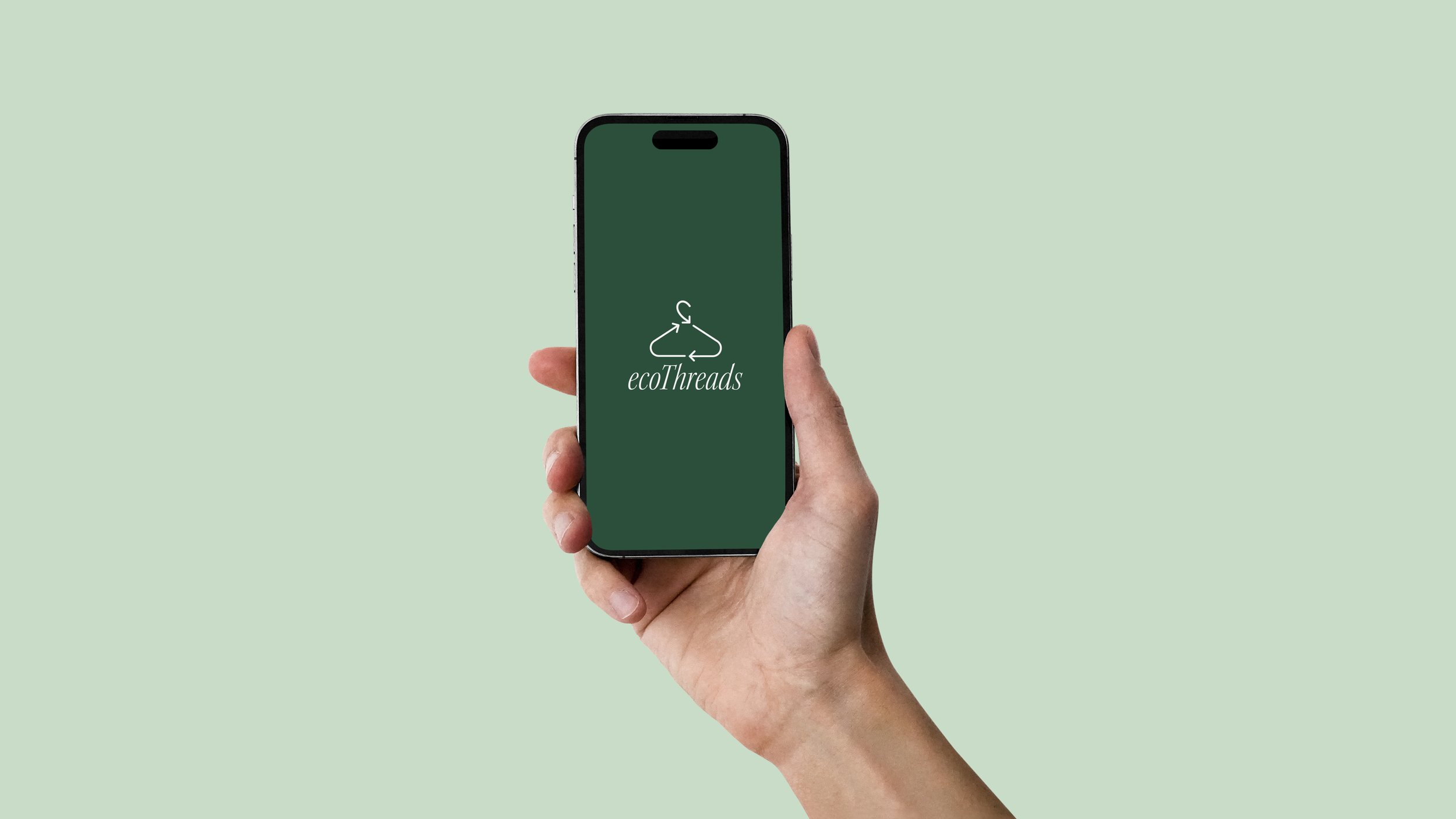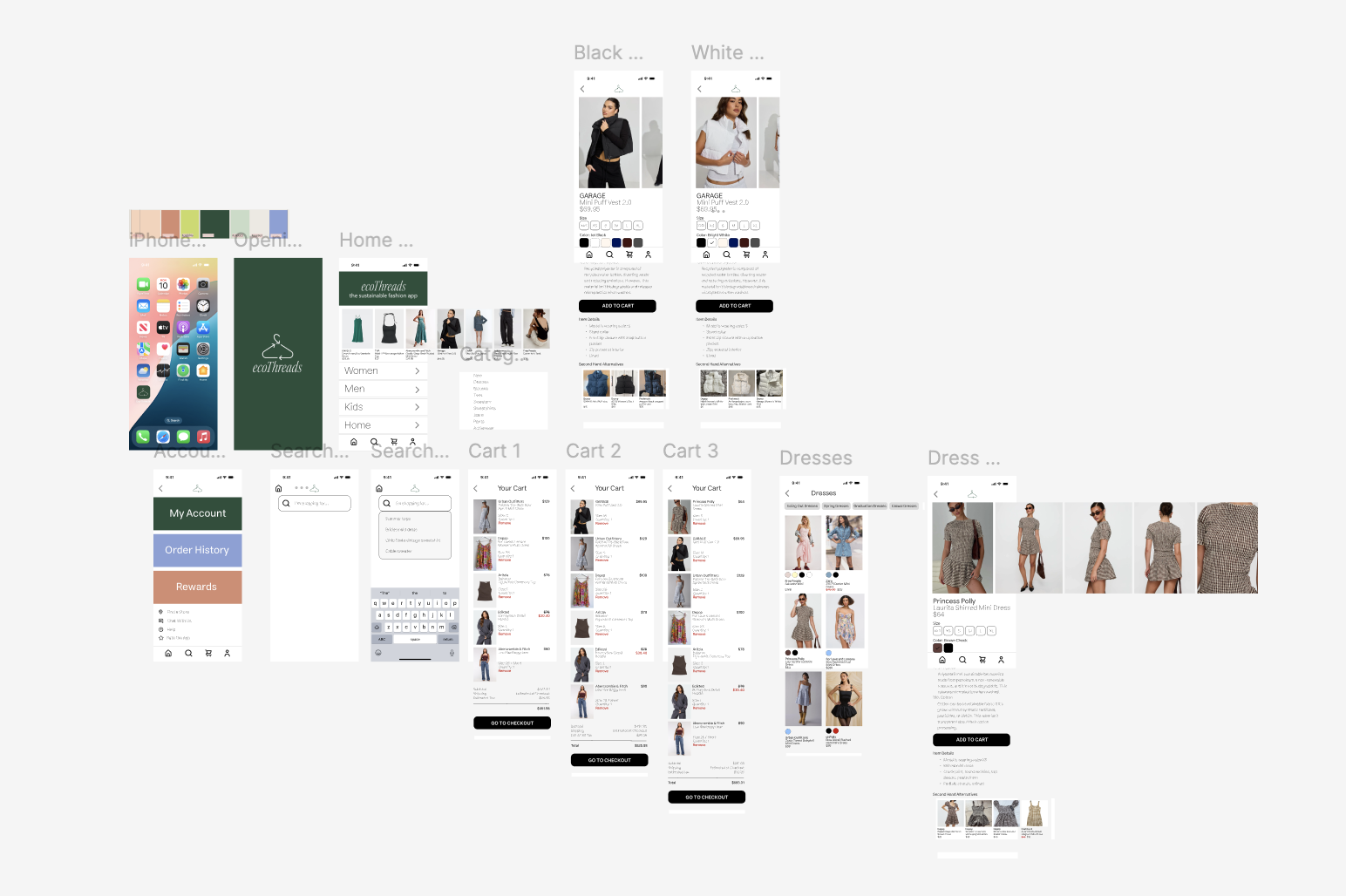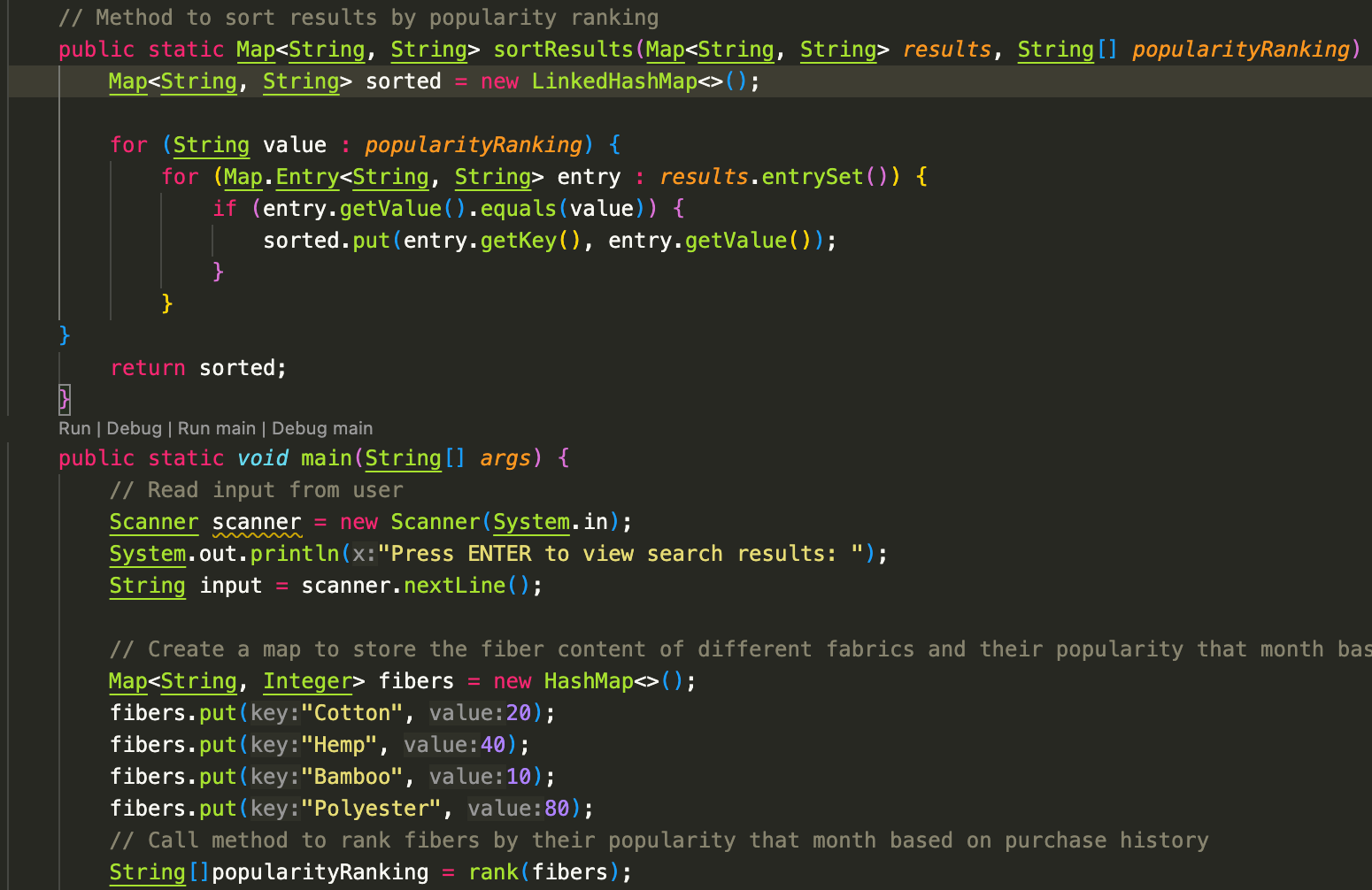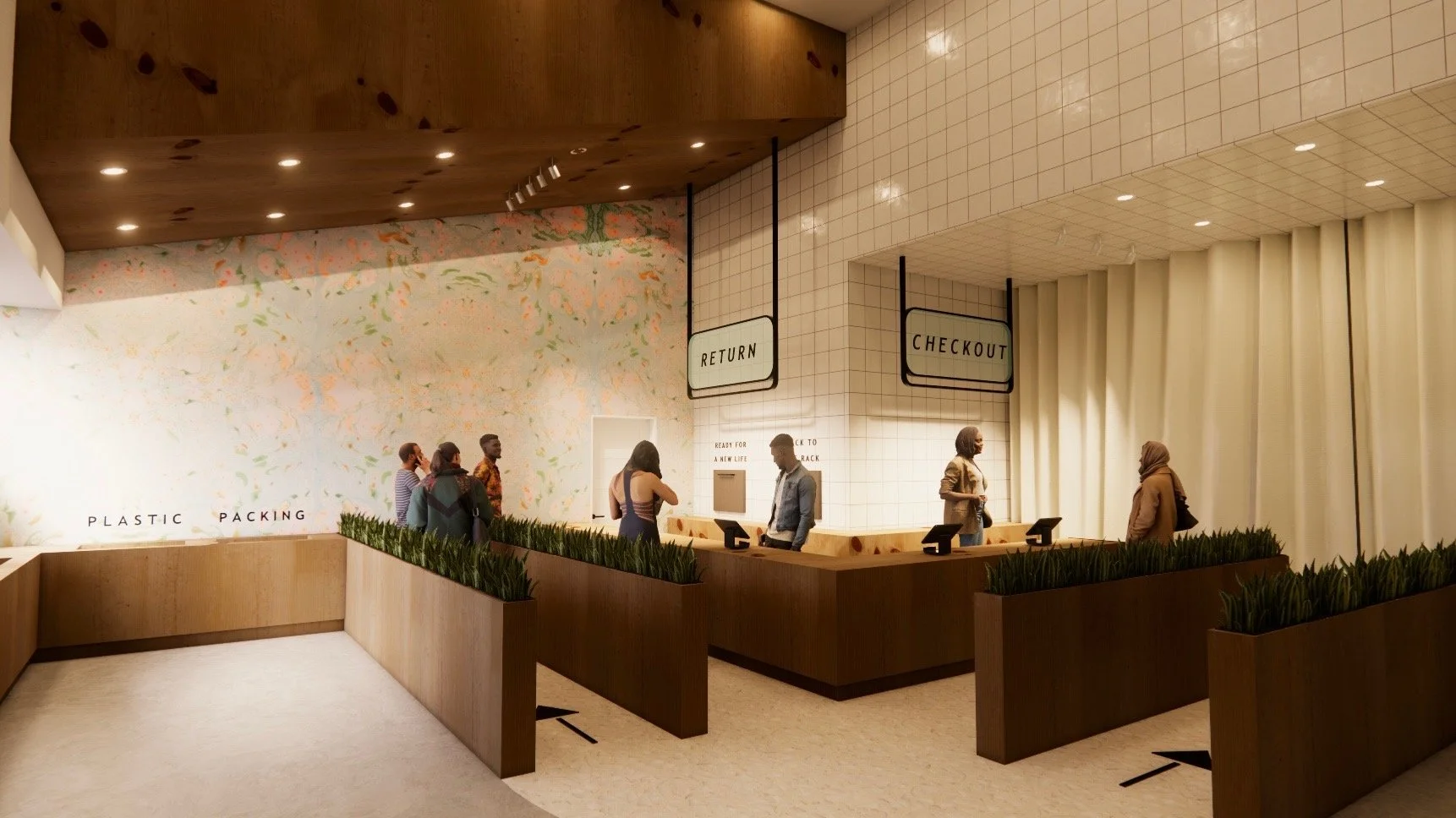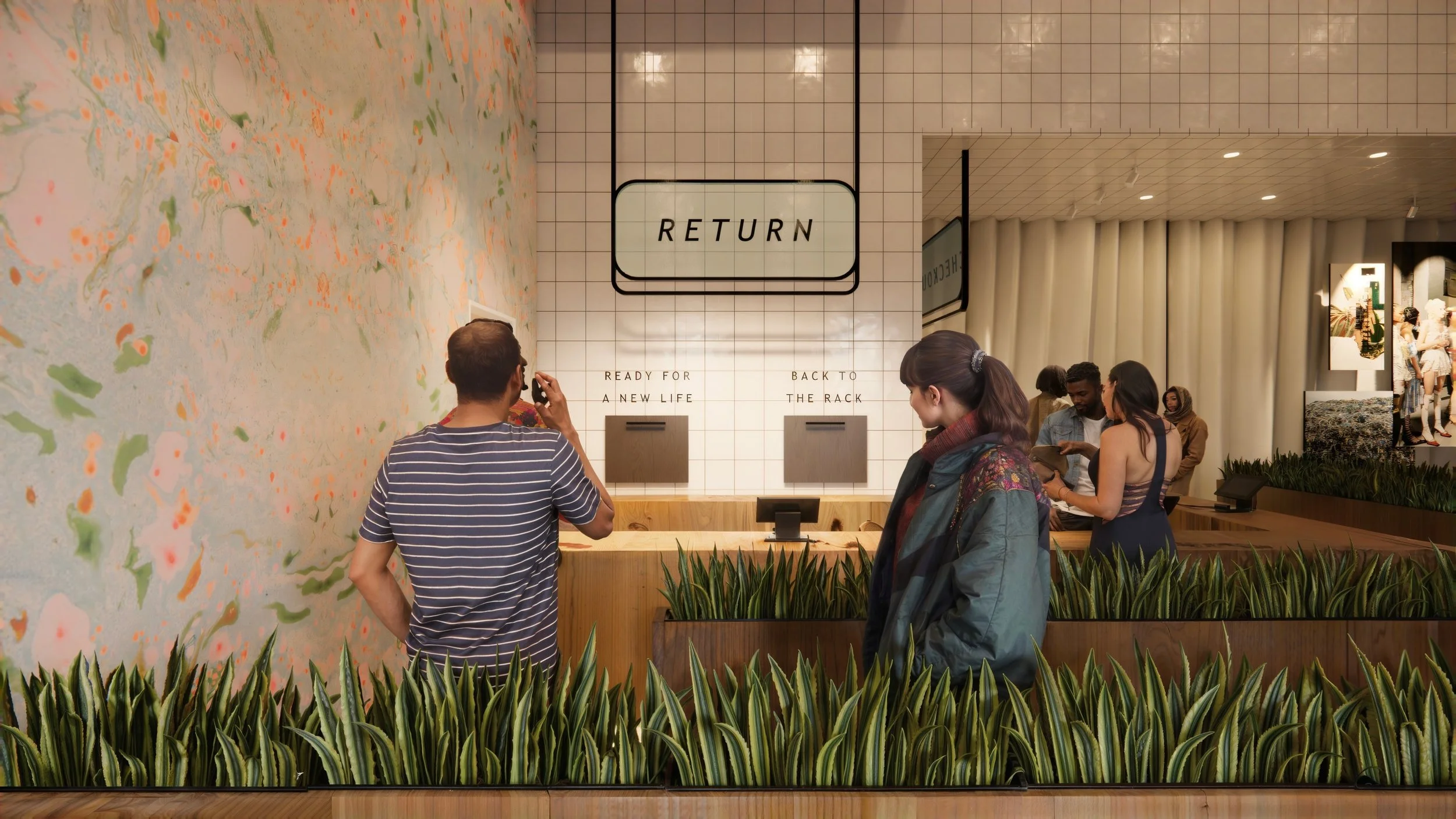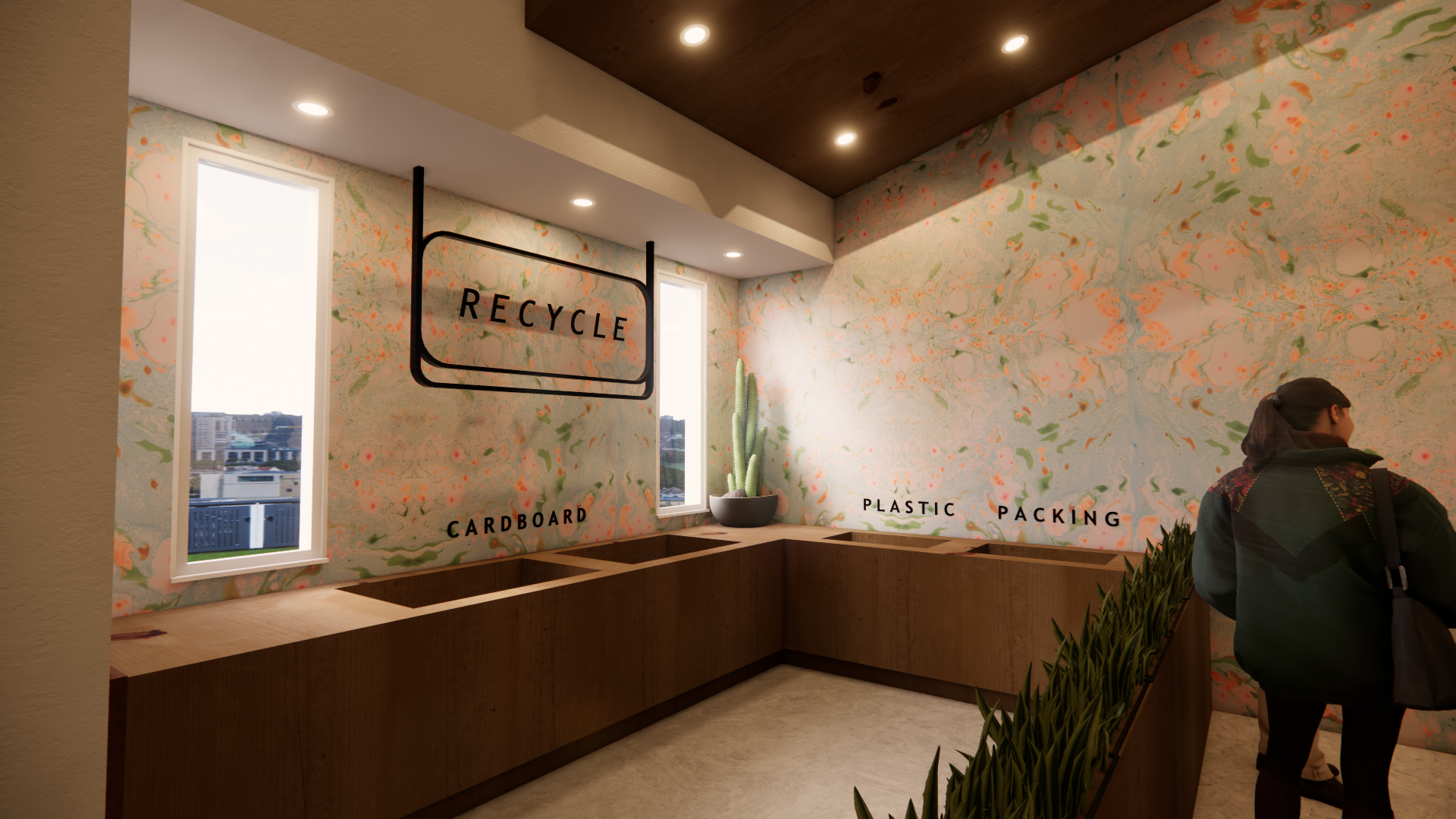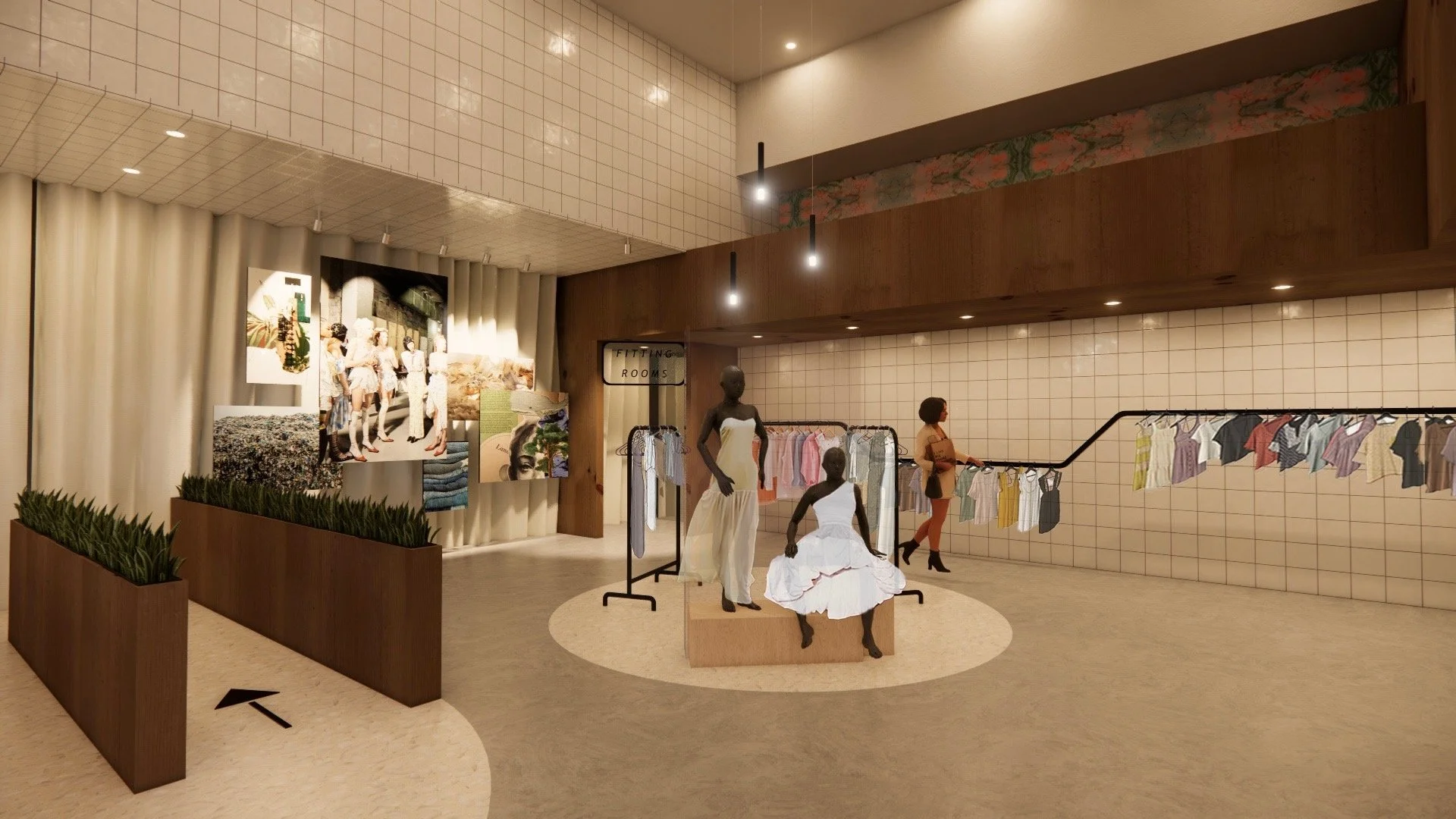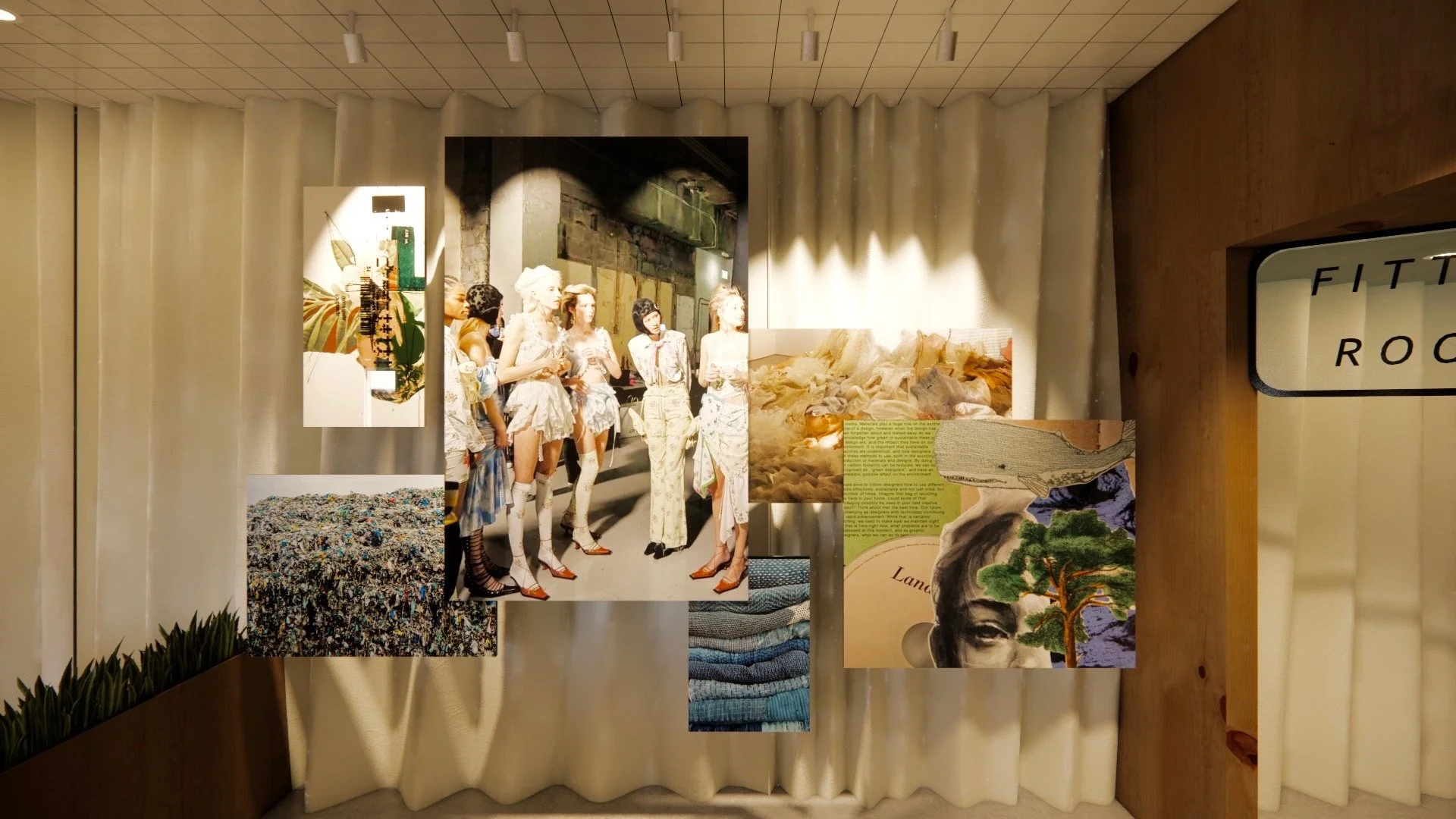EcoThreads
A sustainable fashion app for the next generation of shoppers.
Gen Z is a powerful force in the retail market, prioritizing convenience, authenticity, and sustainability. While they actively seek eco-friendly fashion, there is no marketplace that combines sustainability with the mainstream brands they love. Existing platforms often lack high-demand brands, forcing consumers to choose between style and ethics. EcoThreads fills this gap by creating a curated marketplace that merges sustainability with the most prominent brands Gen Z shops from, making conscious fashion more accessible and desirable.
10 week project | Role: UI/UX Designer, Project Collaborator
I collaborated with Isabel Nixson and Georgia Weeden to develop the concept for EcoThreads. We then individually developed specific components of the brand experience and interface.
The spring design ciricullum at The Ohio State University includes a collaborative studio. These studios allow design students from the Industrial, Visual Communication, and Interior Design programs to work together to create unique projects. In my Imersive Technolgoy studio I worked with Visual Communication and Interior Design peers to research and develop the EcoThreads concept.
About the Project
From Interest to Reality
Everyone involved in EcoThreads brought a unique mix of skills and interests, so before developing a concept we began by mapping out those strengths and identifying common connections. We ultimately decided to center our project around three shared areas of interest: shopping and fashion, app development, and sustainability.
Fast fashion and second-hand apparel purchases contribute $498 billion to the US economy - 20% of purchases are made online
To ground our idea, we conducted market research and surveyed our peers about their shopping habits. From this, we identified a clear gap in the online retail space. Currently, secondhand and new fashion retailers operate on separate platforms, creating a fragmented and often inconvenient shopping experience for consumers. On top of that, many new-item retailers fall short in addressing sustainability, leaving eco-conscious shoppers with limited integrated options. With these insights in mind, EcoThreads became a full exploration of how technology, design, and sustainability could intersect.
Branding
Isabel developed the brand identity of the app so that Georgia and I could bring those elements into physical and digital spaces. This process started with us pulling together inspiration in a shared Pinterest board, which then informed Isabel's creative decision making. Images played a large role in Isabel's process of creating a brand language. She paid particular attention to textile patterns, florals, and fashion photoshoots from a variety of found images to establish our color palette. These images also served as inspiration for our wordmark and logo, which I used throughout the interface of the app.
The App
The online clothing market is currently split between new and secondhand fashion, with little crossover between the two—a gap that underscores the importance of marketplaces in shaping how consumers shop. While secondhand fashion is often the more economical choice, it can be difficult to navigate and unreliable for shoppers who still want to follow trends and keep up with current styles. At the same time, many existing platforms either cater to older demographics or set price points that are inaccessible to the average college student, leaving younger, budget-conscious consumers underserved.
EcoThreads bridges this gap by combining top retailers’ new and thrifted garments in one platform. It eliminates the need for outside research by verifying sustainability upfront, breaking down each garment’s environmental impact and ranking its sustainability based on its composition. Additionally, the app recommends similar thrifted items, making conscious shopping more seamless and accessible.
Our goal with EcoThreads was to create an intuitive shopping experience that felt familiar to users, removing any learning curve and making sustainability approachable. The app includes the core functions of a typical retail platform—category browsing, search, cart management, and account features—so users can shop the way they normally would while gaining additional insights into sustainability.
Each listing provides a clear sustainability score, helping users make informed choices at a glance. To ensure no compromises on style or fit, EcoThreads offers the same range of sizes and styles available directly from top retailers while also suggesting thrifted alternatives. This integration allows users to discover more sustainable options without toggling between multiple resale platforms.
For my role in the project, I was responsible for designing the app prototype in Figma. This was my first experience using the software, and I taught myself the process as I worked, learning how to incorporate increasingly complex features to make the prototype as realistic as possible. The result was a fully interactive model that showcased intuitive navigation, seamless filtering, and smooth transitions between pages. By refining these details, I was able to create a polished, user-friendly prototype that brought our EcoThreads concept to life and demonstrated how sustainability could be integrated into a retail experience without sacrificing convenience or style.
The Algorithm
Isabel developed an algorithm for EcoThreads to promote a more balanced and sustainable approach to fiber consumption. Through her research, she found that no single fiber has a perfect life cycle—each comes with its own benefits and drawbacks. A truly sustainable system requires a more even distribution of fiber usage rather than over-reliance on a select few.
To address this, Isabel’s algorithm analyzes data from users’ recent purchases to determine which fibers are being overused and which need more circulation to create a more sustainable balance. When a user searches for a garment, the algorithm ranks fibers based on their current popularity and durability. It then generates 50 search results, labeling garments by their title and dominant fiber content. The listings are sorted using a popularity score, prioritizing less frequently purchased fibers to encourage a more diverse and sustainable fabric ecosystem.
Retail Experience
Georgia designed a dedicated EcoThreads retail and return space using Revit, providing an in-person solution for returns and resale. This storefront helps reduce landfill waste while minimizing the emissions and packaging associated with shipping returns. Customers can return unwanted items, recycle packaging materials, and shop discounted, previously returned garments—all in one location. Upon return, employees assess each item’s condition, determining whether it should be resold at a discount or donated for upcycling. By integrating a physical space with the app, EcoThreads creates a more sustainable shopping cycle, extending the life of garments and reducing environmental impact.
